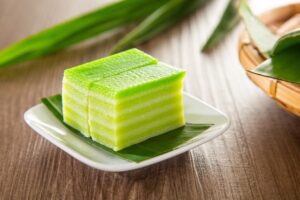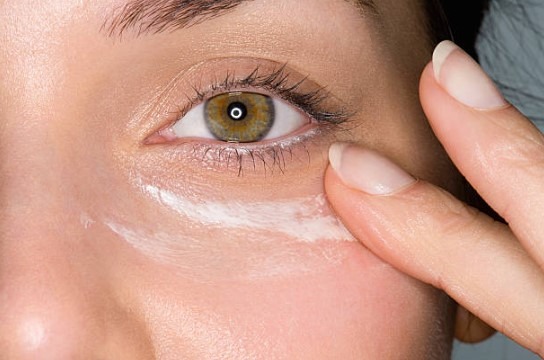The skin around your eyes is one of the most delicate and sensitive areas on your face. This is often where the first signs of aging, fatigue, and environmental stress become apparent, making it essential to give it the special care it needs. Eye creams are formulated to address these specific concerns, but choosing the right product can be confusing with so many options available. In this blog, we will explore why the skin around your eyes is so delicate, how eye creams work, and what to look for in a product that suits your skincare needs.
Why is the Eye Area Skin So Delicate?
The skin around the eyes is thinner and more fragile than the rest of the face, making it prone to showing signs of wear and tear early. Here’s why it requires extra attention:
- Thinner Skin Layer: The skin around your eyes is much thinner, lacking the fat and muscle support present in other areas. This makes it more susceptible to fine lines, wrinkles, and sagging.
- Fewer Oil Glands: The eye area has fewer sebaceous (oil) glands, meaning it lacks the natural moisture and lubrication that other parts of your face have. This can lead to dryness, especially as you age.
- Constant Movement: Your eyes are in constant motion—blinking, squinting, and expressing emotions. This repetitive movement contributes to the formation of wrinkles like crow’s feet.
- Environmental Exposure: The eye area is constantly exposed to environmental factors such as UV radiation, pollution, and free radicals, which accelerate the aging process.
Why Use an Eye Cream?
Regular face creams may not be enough to address the specific needs of the eye area. Eye creams are specially formulated to provide targeted care for this delicate zone. Here’s why they are essential:
- Hydration: Eye creams are designed to provide deep hydration without being too heavy. Proper hydration helps smooth out fine lines and combat puffiness.
- Anti-Aging Properties: Many eye creams contain ingredients like peptides, retinol, and antioxidants that specifically target signs of aging, such as crow’s feet and under-eye wrinkles.
- De-Puffing and Dark Circles: Eye creams often include ingredients like caffeine, vitamin K, and arnica to reduce puffiness and diminish dark circles.
- Gentle Formulation: The skin around your eyes is prone to irritation, so eye creams are usually formulated to be non-irritating and safe for sensitive skin.
Key Ingredients to Look for in Eye Creams
Understanding the ingredients in your eye cream can help you select the best product for your needs. Here are some of the most effective ingredients:
- Hyaluronic Acid: Known for its moisture-binding properties, hyaluronic acid can hydrate and plump the skin, reducing the appearance of fine lines.
- Retinol: A powerful anti-aging ingredient, retinol helps to accelerate cell turnover and boost collagen production, smoothing out wrinkles over time.
- Peptides: Peptides are amino acids that encourage the production of collagen and elastin, helping to firm the skin and reduce sagging.
- Caffeine: This ingredient helps reduce puffiness by constricting blood vessels and encouraging fluid drainage from the area.
- Vitamin C: As an antioxidant, vitamin C brightens the under-eye area, reduces the appearance of dark circles, and protects against free radical damage.
- Niacinamide: This form of vitamin B3 helps reduce the appearance of dark circles and improves skin elasticity.
- Ceramides: Ceramides are fatty acids that help to restore the skin’s natural barrier, providing hydration and protecting the delicate eye area.
How to Apply Eye Cream for Best Results
It’s not just about using the right eye cream but also applying it correctly to maximize its effectiveness:
- Use Your Ring Finger: The ring finger applies the least pressure, making it ideal for the delicate skin around your eyes.
- Start Small: A pea-sized amount is usually enough for both eyes. Using too much product can lead to irritation.
- Gentle Tapping Motion: Pat the cream gently around the orbital bone (the bony area surrounding your eye) rather than rubbing it in. Rubbing can tug at the skin and contribute to the formation of wrinkles.
- Avoid the Lash Line: Eye creams should not be applied directly on the eyelids or too close to the lash line, as they can cause irritation if they get into the eyes.
- Consistency is Key: For the best results, apply eye cream twice daily—once in the morning and once at night—as part of your regular skincare routine.
Common Concerns: Dark Circles, Puffiness, and Wrinkles
Different eye concerns may require different ingredients and formulations. Here’s how to address common issues:
- Dark Circles: Look for ingredients like vitamin C, caffeine, and niacinamide, which help brighten the skin and reduce the appearance of darkness.
- Puffiness: Caffeine and green tea extracts are great for de-puffing the under-eye area by stimulating circulation and reducing water retention.
- Wrinkles and Fine Lines: Retinol, peptides, and hyaluronic acid are excellent choices for combating wrinkles and restoring a youthful appearance.
Eye Creams vs. General Moisturizers: What’s the Difference?
You might wonder why you can’t use your regular facial moisturizer for the eye area. While some moisturizers may be safe for the under-eye zone, they are not typically formulated to address the specific concerns of this delicate area. Regular moisturizers might be too heavy or lack the specialized ingredients that target issues like puffiness, dark circles, and fine lines. Eye creams are often lighter, more concentrated, and designed with the eye area’s sensitivity in mind.
Conclusion: Choosing the Right Eye Cream for Your Delicate Eye Area
Investing in a quality eye cream tailored to your skin’s needs can make a significant difference in maintaining a youthful, radiant appearance. Look for targeted ingredients, apply the cream properly, and be consistent in your routine to protect and nourish the most delicate area of your face. Whether you’re dealing with puffiness, dark circles, or fine lines, there’s an eye cream out there designed to help you look and feel your best.
























